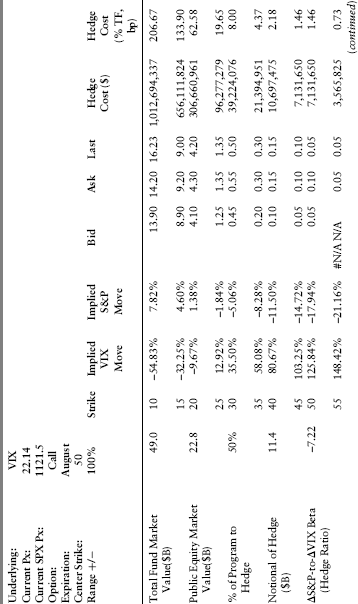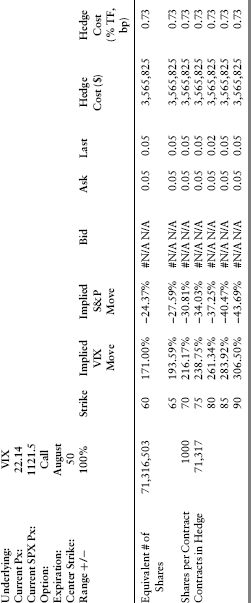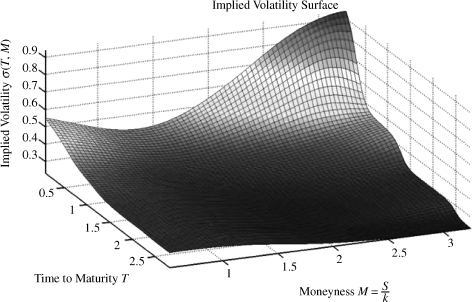VIX Calls
A related hedging product is a call option on the VIX itself. Table 18.2 is the VIX counterpart to Table 18.1's S&P 500 put. Here, we see that on August 3, 2010, the current VIX was at 22.14. We choose to center our strikes at 50 and use the same market value of the fund ($49 billion) with public equity component equal to $22.8 billion, of which we wish to hedge 50 percent, or $11.4 billion, which becomes the notional amount for the hedge.
Table 18.2 August 3, 2010, VIX Calls.


Let's take the VIX one-month contract with strike 50. If the VIX exceeds 50, the call option would be exercised and the payoff would be the difference between the spot VIX and the strike value times the notional. This is a 125.84 percent increase in volatility from the August 3 level. For convenience, column three includes the implied S&P 500 move. For example, a 18 percent decline in the S&P 500 index is consistent with the 125.84 percent increase in implied volatility. Notice that strikes above 50 have no bids, suggesting that the market places no significant likelihood on volatility risk to these levels (notice that the implied S&P move is about where we'd be in our tail risk hedge example). The asking price, however, is very, very cheap at these elevated VIX levels. As we move into lower volatility options, the cost of hedging rises exponentially, which makes sense intuitively, since these options are already in the money.
There is a term structure of sorts regarding implied volatility that is worth understanding. It suggests that implied volatility is conditional on both the moneyness of the option as well as the time to expiration of the contract. Longer-dated contracts will, in general, have lower implied volatility, due to mean reversion. Other things constant, moneyness—a measure of how much the option is in the money—will tend to drive up implied volatility, too, especially for shorter times to maturity. Figure 18.1 illustrates this relationship.
Figure 18.1 Implied Volatility as a Function of Moneyness and Expiration Date

Understanding this relationship is critical to formulating strategies using various dated contracts as well as forming beliefs on whether existing contracts are over- or underpriced.
These three examples are designed to give you an idea of the types of strategies available to help manage portfolio risk. They are certainly not exhaustive and it is not hard to find textbooks entirely devoted to the subject. Nevertheless, these are valuable applications that illustrate both the intuition and application of practical hedging strategies.
